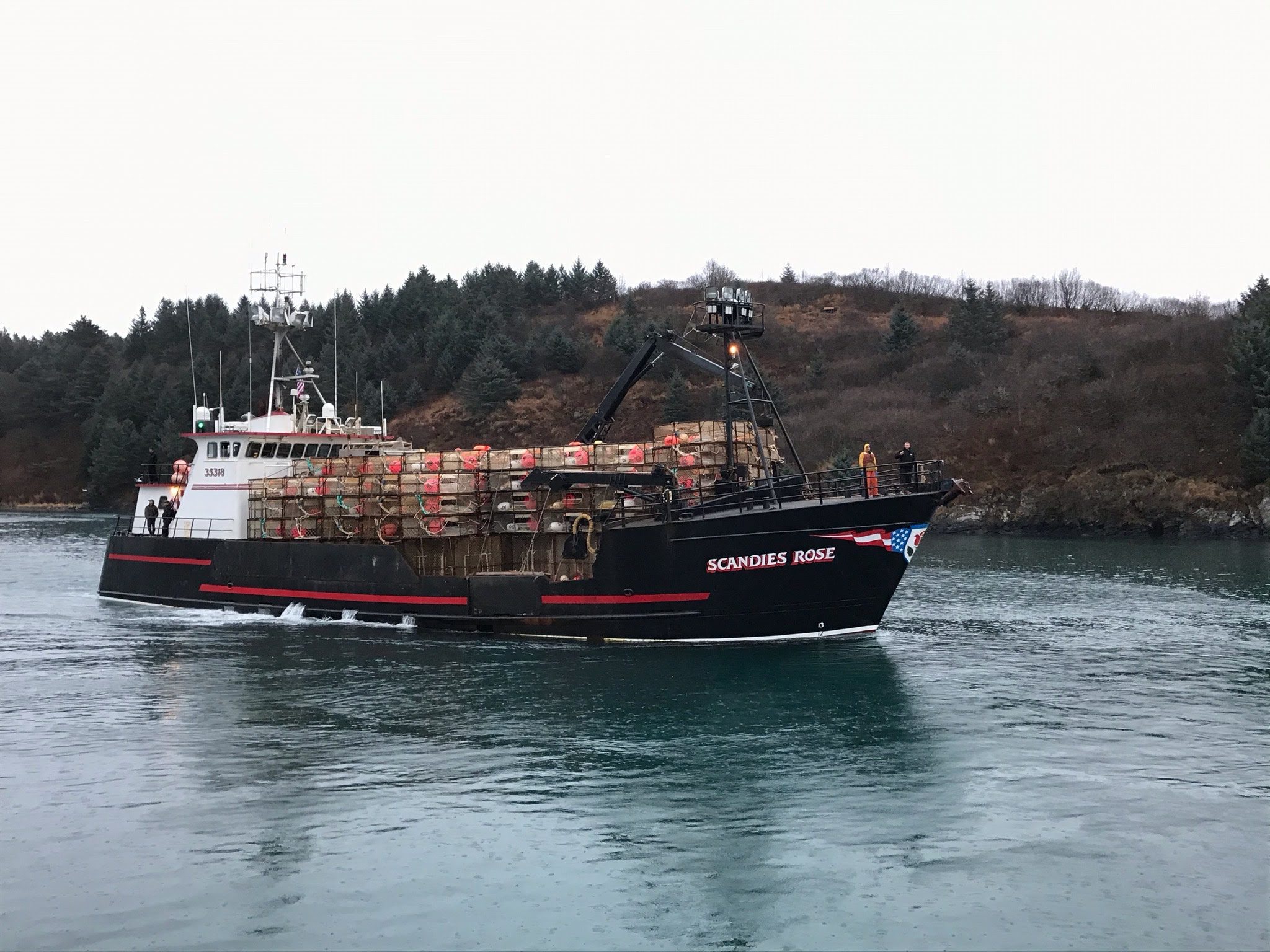NTSB issues 7 Safety Recommendations from its investigation into the Scandies Rose sinking.
The National Transportation Safety Board has determined probable cause and issued seven safety recommendations related to the deadly 2019 New Year’s Eve sinking of the fishing vessel Scandies Rose resulting in the deaths of five crew members.
The 130-foot crab fishing vessel Scandies Rose capsized and sank on December 31, 2019, while 2.5 miles south of Sutwik Island, Alaska en route from Kodiak to Bering Sea fishing grounds. Two of its seven crew members were rescued by the U.S. Coast Guard and all five remain missing.
According to the NTSB, the Scandies Rose likely accumulated between 6 and 15 inches of ice on surfaces exposed to wind and icing before capsizing. The agency said the added weight from ice accumulated asymmetrically on the vessel and stacked crab pots on deck, raising its center of gravity and reducing the vessel’s stability, which contributed to the capsizing.
The investigation found that although the crew loaded the Scandies Rose per the stability instructions on board, the instructions were inaccurate and, as a result, the vessel did not meet regulatory stability criteria and was more susceptible to capsizing.
During a public board meeting held Tuesday, the board determined the probable cause was the inaccurate stability instructions, which resulted in a low margin of stability to resist capsizing, combined with the heavy asymmetric ice accumulation on the vessel due to conditions more extreme than forecasted.
The NTSB identified the following safety issues during its investigation: the effect of extreme icing conditions, lack of accurate weather data for the accident area, the vessel’s inaccurate stability instructions and the need to update regulatory guidelines on calculating and communicating icing for vessel stability instructions.
The NTSB made seven recommendations in total, including four issued to the U.S. Coast Guard, one recommendation to the North Pacific Fishing Vessel Owners’ Association, one to the National Oceanic and Atmospheric Administration (NOAA) and one to the National Weather Service. The agency also reiterated two safety recommendations previously issued to the U.S. Coast Guard.
The safety recommendations seek more accurate stability instructions that realistically consider the effect of icing on crab pots and crab pot stacks, making the Ocean Prediction Center freezing spray website operational and requiring personal locator beacons for every member of a vessel’s crew, the NTSB said.
“Commercial fishing is one of the most dangerous occupations in America, but it does not need to be,” said Chairman Robert L. Sumwalt. “The safety recommendations we issued and reiterated today, if implemented, will make commercial fishing vessels safer and will help mitigate the risks fishermen face in this occupation.”
Icing continues to be a factor in accidents off the coast of Alaska. In June 2018, seven months before the Scandies Rose incident, the NTSB issued Safety Alert 18-074 Ice Accumulation reminding mariners to prepare for icing conditions and the actions to take to maintain vessel stability when icing occurs. The safety alert was issued following the NTSB’s investigation of the sinking of the fishing vessel Destination with the loss of all six crew members in February 2017.
The NTSB lists improving Passenger and Fishing Vessel Safety as an item on the NTSB’s 2021 – 2022 Most Wanted List of Transportation Safety Improvements. Commercial fishing vessels, which remain largely uninspected, continue to be a marine sector of concern. New standards are needed to address intact stability, subdivision and watertight integrity in commercial fishing vessels up to 79 feet long. Many fishing crews aren’t trained in stability management techniques or emergency response, and the NTSB has also found that many vessels do not have proper life-saving equipment, such as flotation devices and operational search-and-rescue locator devices.
The NTSB is expected to complete its final accident report in “several weeks” time, which will include rationale for conclusions, probable cause, and safety recommendations. A synopsis from the NTSB’s report is available currently at https://go.usa.gov/x6Gfr.
The public docket for the investigation, with more than 4,500 pages of factual information, including interview transcripts, photographs and other investigative materials, is also available online.
Sign up for our newsletter

 Join The Club
Join The Club











